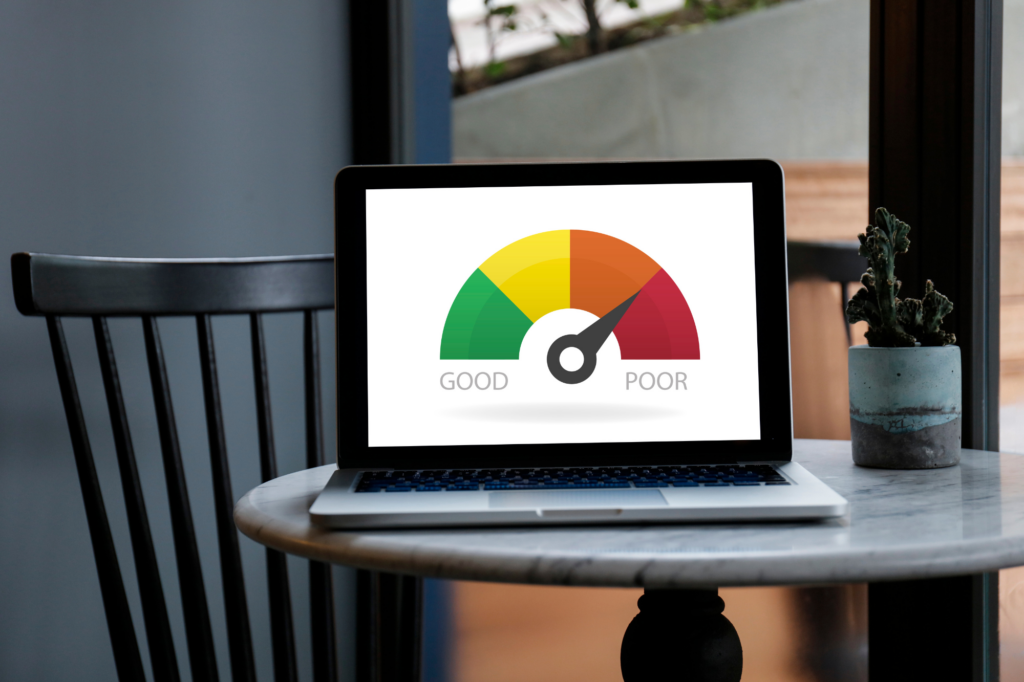Key Takeaways
- A bad credit score makes it harder, but not impossible, to get a business loan
- You may have limited options, but with the right steps, you can get approved
- Focus on improving your credit profile
- Specialist unsecured lenders, equipment finance providers and private lenders will support borrowers with bad credit
- Be prepared to pay higher interest rates and fees for a bad credit business loan
Having poor personal or business credit scores can make the funding process more difficult for Australian businesses. However, there are still options and steps you can take to help you secure affordable financing. Here’s what you need to know:
Understanding Bad Credit
Most lenders assess both personal and business credit profiles when evaluating loan applications from SMEs. Credit scores below 550-600 can be considered “bad” or “poor” by lenders, depending on their credit guidelines.
A poor credit score is a red flag that tells potential lenders that your business has a higher risk of defaulting on a loan. As a result, business owners with a bad credit score may face:
- Higher interest rates
- More declined applications if they choose mainstream lenders
- Lower maximum borrowing amounts
- Stricter security requirements
- Shorter repayment terms
The lower your credit score, typically the more expensive and limited any financing may be. However, applying to unsecured lenders who specialise in bad credit applications or private lenders who don’t require high credit scores can result in a loan approval despite a poor credit history.
What is a Bad Credit Business Loan?
Bad credit business loans refer to loan products designed for business owners who have poor credit scores, limited credit histories, or other issues that make it difficult to qualify for traditional business loans.
Lenders providing these loans evaluate other factors beyond just credit scores and reports. They look at the company’s revenue, cash flow, or security when determining whether to approve an application.
While interest rates are often higher, bad credit business loans allow business owners to access capital that may otherwise be unavailable through traditional lenders.
Strategies for Bad Credit Borrowers
If your business has struggled with defaults, late payments, or other credit issues in the past, these strategies can improve your chances of qualifying:
- Check Your Credit Report: Obtain your latest report from credit reporting agencies like Equifax and check for any potential errors bringing down your score unnecessarily. Dispute and resolve these before applying for loans to improve your chances of approval.
- Improve Your Credit Score: Take steps to improve your credit score as much as possible. You can pay your debts regularly, reduce your credit utilisation, and avoid making too many financing enquiries while you haven’t ironed out your proposal yet.
- Enhance Business Revenue and Cash Flow: Before seeking financing, take steps to increase your business revenue. Negotiate better payment terms with clients, pursue debt collection, and look for ways to boost profitability. More consistent revenues and better cash flow can strengthen your chances of getting approved.
- Consider Providing Security: Putting up assets like property, equipment, or vehicles as security reduces risk for lenders and can make approvals more likely. Gather all the necessary documents proving your ownership and the asset’s value before applying.
- Look at Private Lenders: Non-traditional lenders are often more open to providing bad credit loans than major banks. Be aware, though, that rates are usually higher than what is offered in banks.
Knowing Your Choices
If you have a bad credit score, not all financing options are available to you. Before you lodge an application, ensure that you know the types of loans you can pursue:
- Secured Term Loans: Many lenders will accept bad credit loan applications if there is a significant asset involved. High-value assets like commercial real estate and machinery can provide that added layer of safety for lenders.
- Unsecured Term Loans: Although less common, unsecured bad credit loans are also available. However, you are not likely to get approval from banks.
- Equipment Financing: These loans are secured by the equipment being purchased, so many lenders allow borrowers with bad credit to access them.
- Invoice Financing: This line of credit involves borrowing against your outstanding customer invoices. You can get fast access to cash as the accounts receivable act as security.
Building Your Loan Proposal
Once you’ve taken steps to address past credit issues and gathered supporting documents, it’s time to apply. Here are some of the things you may need to prepare for your application:
- Financial Statements: If you’re applying for a large unsecured loan or equipment finance, prepare your financials, a 12-month cash flow forecast, YTD management accounts, aged payables and receivables, and tax portal printouts. Note that smaller unsecured loans and private lenders will not typically require these documents.
- Amount and Purpose: Be very specific about how much you need and what you will use these funds for.
- Credit Explanation: Briefly explain the circumstances behind your past credit challenges and the steps you’ve taken to overcome them.
- Security Overview: Provide details of unencumbered assets you could use as security.
- Company Background: Give lenders a quick primer on your business history, operations, team experience, milestones, and trajectory.
With a consistent focus on improving personal and business credit scores over 6-12 months, more financing options should start opening up again. If you’re patient and diligent, you can put past credit issues behind you in time.
Apply for a Bad Credit Business Loan with the Help of Loan Experts
Bad credit can make accessing financing harder, but it doesn’t have to be a permanent impediment to your business’ growth. With the help of loan experts like us at Dark Horse Financial, you can secure better rates from our trusted lending partners.





